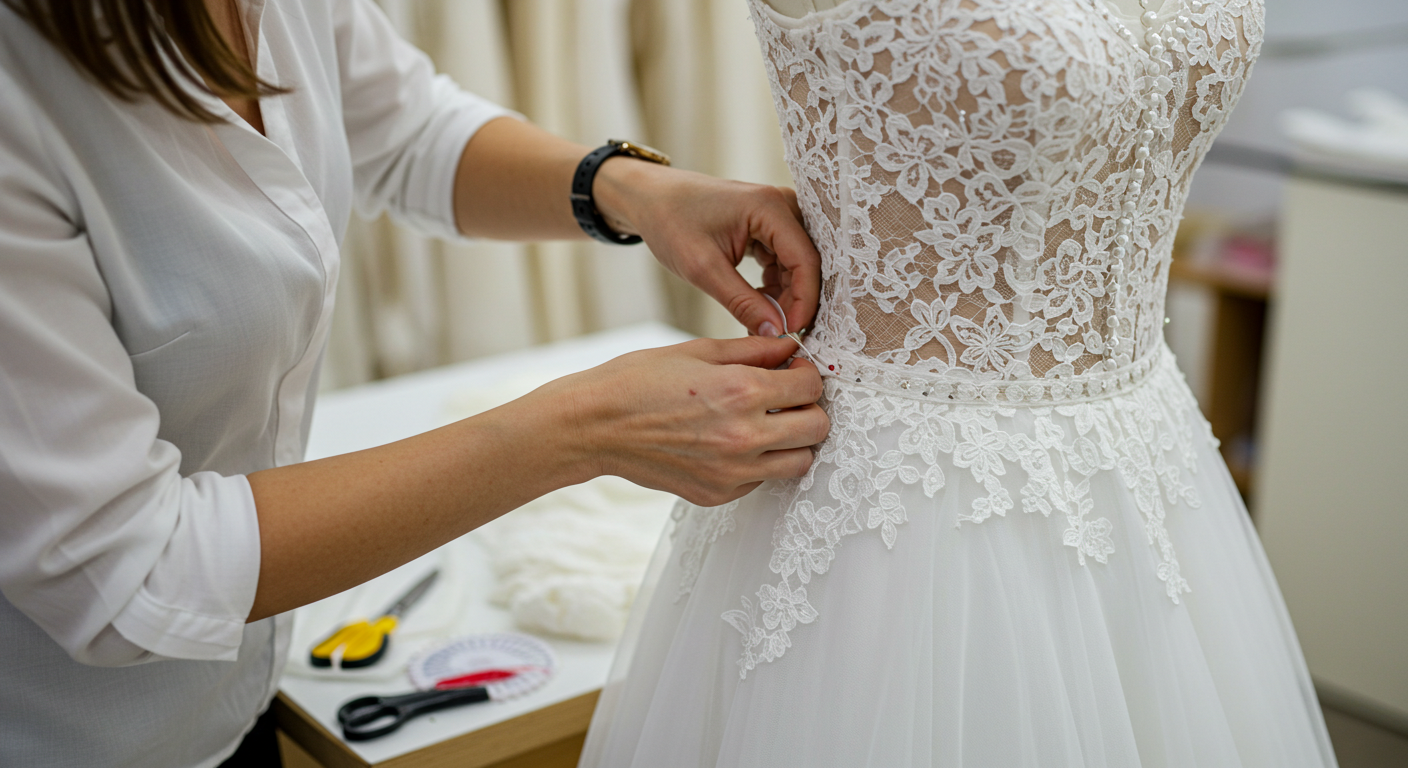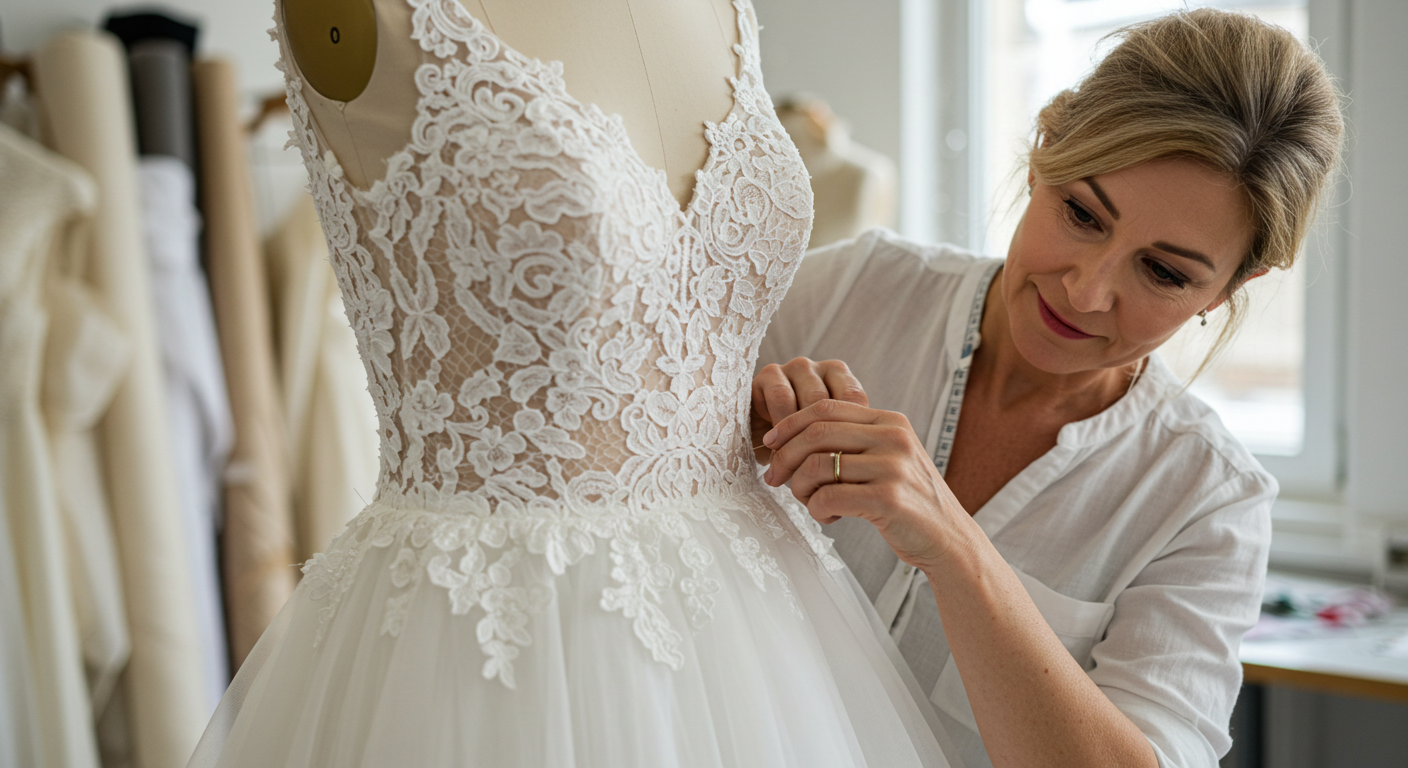Your wedding dress is one of the most important garments you’ll ever wear, and ensuring it fits perfectly is crucial for feeling confident and beautiful on your big day. Wedding dress alterations are a key part of this process, but many brides aren’t sure where to start. This guide will walk you through everything you need to know about wedding dress alterations, from timing and costs to what to expect during fittings.
Why Are Wedding Dress Alterations Important?
Most wedding dresses are not made-to-measure, which means they’re designed to fit a range of body types but rarely fit anyone perfectly off the rack. Alterations ensure your dress hugs your curves, flatters your figure, and feels comfortable throughout the day. Whether it’s adjusting the hem, taking in the waist, or adding custom details, alterations transform a beautiful dress into your dream gown.
When Should You Start Alterations?
Timing is critical when it comes to wedding dress alterations. Here’s a general timeline to follow:
- Order Your Dress Early: Most bridal shops recommend ordering your dress 6-9 months before your wedding. This allows time for the dress to arrive and for multiple alteration appointments.
- First Fitting: Schedule your first fitting 2-3 months before the wedding. This gives your seamstress enough time to make significant changes if needed.
- Final Fitting: Plan your final fitting 2-4 weeks before the wedding. By this point, your body should be close to its wedding-day shape, and only minor tweaks will be necessary.
Pro Tip: If you’re planning to lose weight or make significant fitness changes, communicate this with your seamstress so they can plan accordingly.
What Can Be Altered on a Wedding Dress?
Almost every part of a wedding dress can be altered, but the complexity (and cost) will depend on the design and fabric. Common alterations include:
- Hemming: Adjusting the length of the dress to suit your height and shoes.
- Taking In or Letting Out: Resizing the bodice, waist, or hips for a better fit.
- Straps and Sleeves: Shortening or lengthening straps, adding sleeves, or converting sleeves to straps.
- Bustle: Adding a bustle to lift the train off the ground after the ceremony.
- Custom Details: Adding lace, beading, or other embellishments to personalize your dress.
Keep in mind that some alterations, like adjusting intricate beading or lace patterns, can be more challenging and time-consuming.
How Much Do Wedding Dress Alterations Cost?
The cost of alterations varies widely depending on the complexity of the changes and the experience of the seamstress. On average, brides spend between 150and150and600 on alterations. Here’s a breakdown of potential costs:
- Hemming: 75−75−150
- Bodice Adjustments: 100−100−300
- Bustle: 50−50−150
- Custom Details: 100−100−500+
To avoid surprises, ask for a detailed estimate during your first fitting.
Choosing the Right Seamstress
Not all seamstresses are created equal, especially when it comes to wedding dresses. Here’s how to find the right professional:
- Ask for Recommendations: Check reviews, ask your bridal boutique, or consult friends who’ve recently gotten married.
- Review Their Portfolio: Look for examples of their work, especially with dresses similar to yours.
- Communicate Clearly: Make sure they understand your vision and are open to your ideas.
- Check Availability: Ensure their schedule aligns with your wedding timeline.
What to Bring to Your Fitting
To get the most out of your fitting appointments, come prepared:
- Your Wedding Shoes: The height of your shoes affects the length of the dress.
- Shapewear: If you plan to wear shapewear on your wedding day, bring it to the fitting.
- Accessories: Bring any belts, veils, or jewelry you plan to wear to ensure everything coordinates.
- A Trusted Friend or Family Member: A second opinion can be invaluable.
Common Alteration Mistakes to Avoid
- Starting Too Late: Rushing alterations can lead to mistakes or added stress.
- Over-Altering: Avoid making too many changes, as this can compromise the integrity of the dress.
- Ignoring Comfort: A dress that looks stunning but feels uncomfortable can ruin your day.
- Skipping the Final Fitting: Even if everything seems perfect, a final fitting ensures no last-minute adjustments are needed.
Final Thoughts
Wedding dress alterations are an essential step in creating your dream look. By understanding the process, planning ahead, and working with a skilled seamstress, you can ensure your dress fits like a glove and makes you feel like the best version of yourself on your wedding day.
Remember, your wedding dress is more than just a dress—it’s a reflection of your personality and style. With the right alterations, it will be perfect in every way.
This guide provides a comprehensive overview of wedding dress alterations, helping brides navigate the process with confidence and ease. Whether you’re a DIY bride or working with a professional, these tips will ensure your dress is everything you’ve dreamed of and more.



